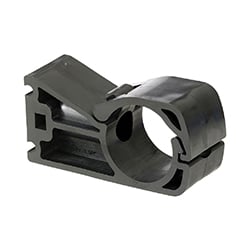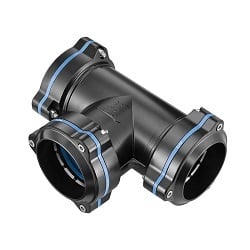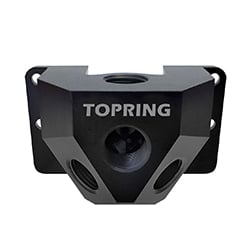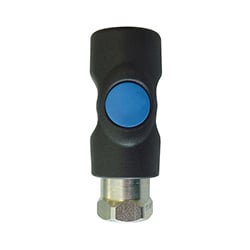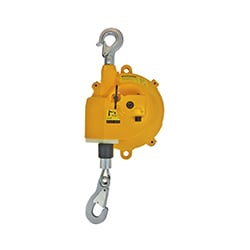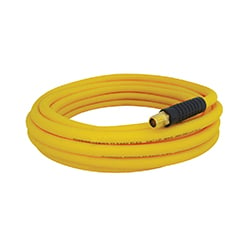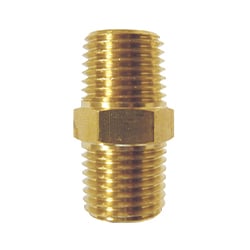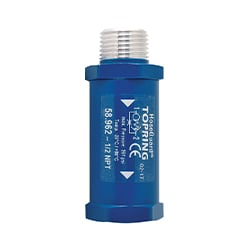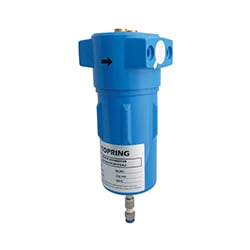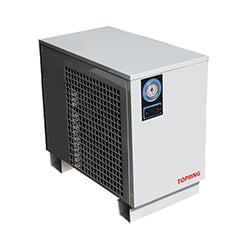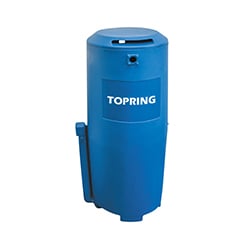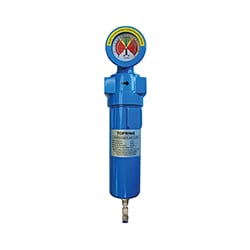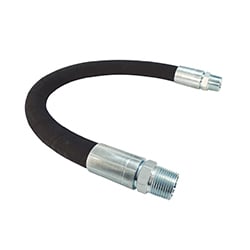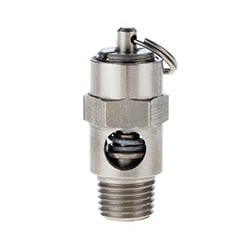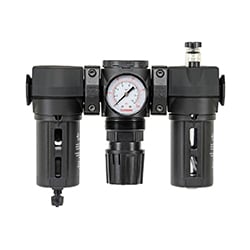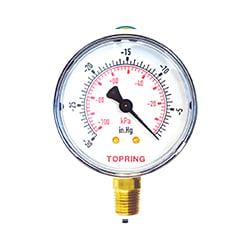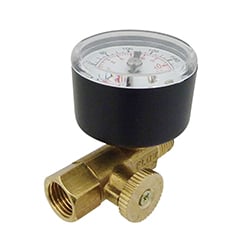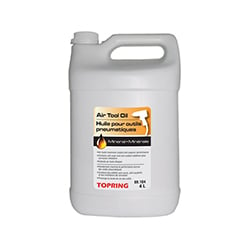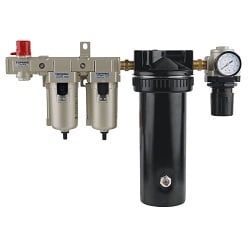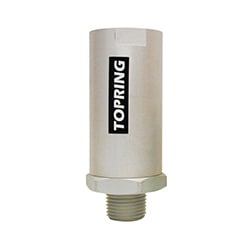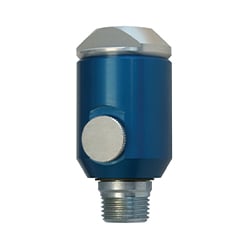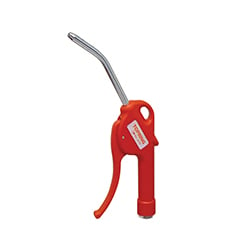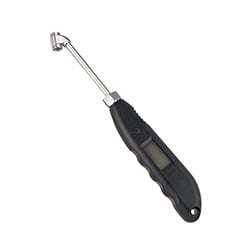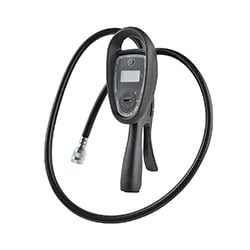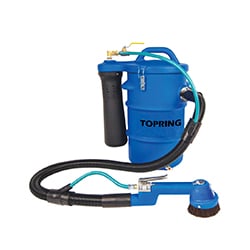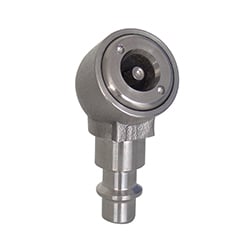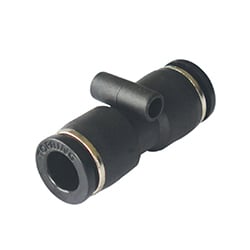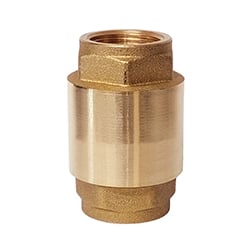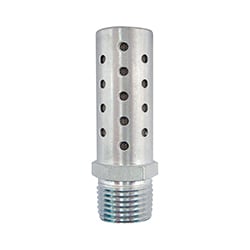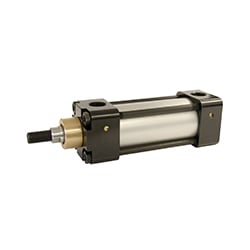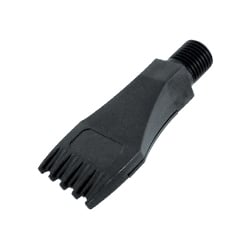For years you've been promising yourself to redesign your air network, to start completely from scratch. Yet you keep postponing the project maybe for... lack of time, resources, and/or knowledge... all excuses are okay! However, a few simple rules of thumb are enough. And once the work is done, you'll wonder why you didn't do it sooner. To help you, I have compiled a list of key elements to respect for an optimal network. You'll see, it's really very simple!
1. An adequate supply of compressed air
Let's start at the beginning: the compressor. It supplies the network with the amount of air required to operate pneumatic equipment and tools.
Choosing the location of the compressor
The best working conditions for your compressor are in a separate, spacious, ventilated room, insulated from outside temperatures and with an ambient temperature between 5 and 25 °C.
Compressor output capacity
Make sure the compressor meets the requirements of your facility. To do this, you must first know your compressed air requirements and the frequency of use. Knowing how much compressed air (m3/hr) is required at a specific pressure (PSI) will help ensure that the system is running properly for the required period. To verify that your compressed air capacity matches your usage, refer to the compressor manufacturer's data. An undersized compressor will put more strain on the system, which will shorten its lifespan. Conversely, an oversized compressor is an unnecessary expense.
The size of the air tank
Next, make sure the tank associated with the compressor is properly sized for your needs. The air tank will provide a steady and constant supply to the system, which will prevent overloading the compressor and allow you to work more efficiently. This will help to extend the life of your compressor which will pay off in the long run.
The connection of the compressor to the rest of the network
Establish an efficient and safe connection from the compressor to the air tank and from the tank to the system. Too often, the first air leak in the system is before it even enters the plant. Compressors, especially piston machines, have an unfortunate tendency to shake... and leak! My suggestion: You can install an anti-vibration hose at the compressor outlet, which extends the life of the compressed air distribution system by reducing the stress produced by vibration and heat.
Bonus: Implement air treatment solutions at the compressor outlet to ensure clean, dry air and preserve your air system. For more information, check out Topring's article How To Remove And Treat Condensate at the Compressor Outlet.
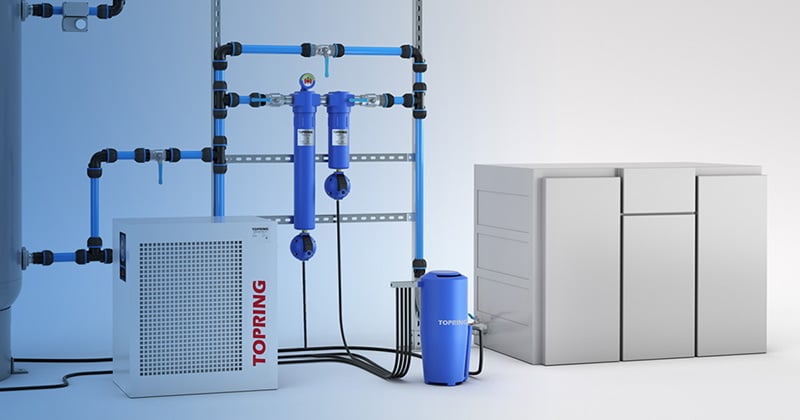
The compressor is the most important part of the network. I often compare it to the heart. In fact, I dedicated a previous article to it, which I invite you to read if you haven't already done so: How To Choose An Industrial Air Compressor.
2. A pipe material that is easy to install... and above all, that will stand the test of time!
Now let's think about the piping. The first question is: what material should I choose? There are several possibilities. Here is my summary of the various materials available on the market.
Steel pipes
It is well known that steel is a material that oxidizes and rusts. The rough inner surface of steel pipes generates very high turbulence in the airflow, which greatly weakens the flow and pressure. Due to their weight, steel pipes require substantial support. Finally, we also know that the installation of these pipes is tedious, long, and painful (and therefore expensive). I'm not even talking about the very probable subsequent maintenance and modifications!
Copper pipes
Unfortunately, copper is so expensive! Contrary to popular belief, it is very sensitive to humidity! The resulting copper oxide, carried in the air stream, can be very harmful. Imagine if you dropped a pneumatic tool loaded with copper oxide particles... better not think too much about what your lungs would suck in! Finally, let's not forget that the use of welding torches is often forbidden in buildings...
Polyurethane pipes
Polyurethane, why not? Because of its small diameter of ½ inch, polyurethane tubing is perfect for a very small system, such as a residential garage or workshop.
Aluminum pipes
Aluminum is an interesting material! It is light, clean, and smooth on the inside. With the wear and tear of time, aluminum does not corrode, which preserves the efficiency of the system. The installation of tubes is extremely easy and fast thanks to the system designed specifically for this purpose. Furthermore, the modular system can be easily disassembled and reassembled for later use.
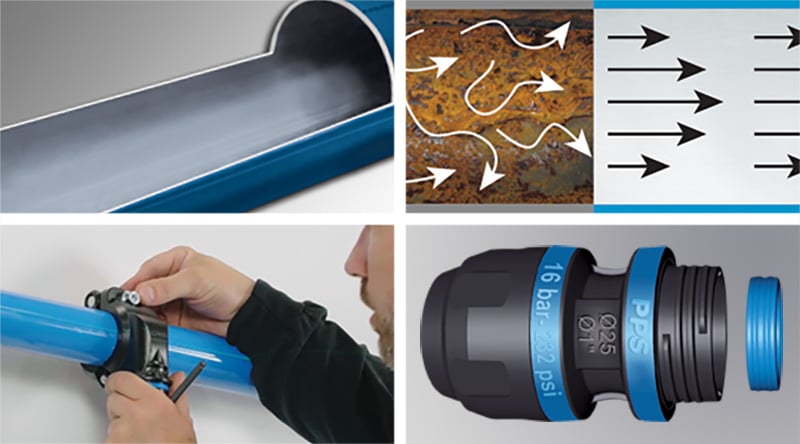
One could imagine all sorts of materials to transport compressed air, but at this point, I recommend that you opt for aluminum. If you want to know more about this alternative before making your choice, I invite you to consult the page for Topring's aluminum pipes, Topring's 100% Aluminum Air System
3. A pipe diameter that is neither too large nor too small!
Choosing the correct pipe diameter is another crucial point in our search for the perfect compressed air system. Choosing one that is too small would immediately doom any hope of a sufficient flow rate to feed your tools, regardless of the capacity of the compressor!
How to determine the right diameter
In fact, determine the ideal diameter according to the calculation tables proposed by the manufacturers. To do this, you need to know the following key elements:
1. The pressure of the network
The pressure should generally be 100-120 psi
2. The length of the pipe
The length will depend on your location, which is easy to determine as long as you know where your workstations are.
3. The flow rate of your air compressor
This can be found in the manufacturer's specifications. When in doubt, you can estimate the flow rate based on the compressor horsepower with the following calculation: SCFM = [4 x HP].
4. Future demand
Most facilities face a gradual increase in air production and demand over the years. It is far more economical to choose a system with 50% spare capacity today, rather than replace a system that has outgrown its capacity 5 years later.
A well-planned network will guarantee a perfect flow at any point of the workshop and especially under constant pressure!
In conclusion
Of course, there are many other points to consider when building a new compressed air system or simply optimizing your existing one. I hope that with these three major rules, you will be able to start off on the right foot. Don't hesitate to contact your Topring representative who will be able to guide you through the process. I'll leave you with a few more things to consider.
Think in straight lines
Wherever possible, avoid unnecessary elbows. Every bend slows down the airflow a little. To visualize the air line, think of the road network: a straight road is bound to have better traffic flow.
Close the network
Regardless of the location of a branch on the system, a closed loop feeds it through two paths at the same time. This facilitates airflow and provides a bypass path to maintain service when a portion of the piping needs to be closed for maintenance. To use the idea of the road network, it is the equivalent of a ring road that allows a great deal of fluidity all around the city and avoids traffic jams in its center. If for any reason the loop is impossible, then compensate by installing a buffer tank at the end of the line that will supply air to your tools as needed.
Install valves
The valves will allow you to ensure maintenance without a total air cut-off by isolating a part of your network. (If it is looped, of course!) Some of them, when placed on the outlets, will also offer you the possibility to separate workshops or areas temporarily not in use. An isolated area will no longer be able to supply its air leaks! For this reason, if you do not use your air network continuously (for example at night), I advise you to install a programmable valve near your network supply. This will allow you to shut off the air supply (and costly leaks) during downtime.
Include take-off drop couplings
Don't forget to systematically equip your downpipes with a bypass flange that will allow the retention of traces of condensation and will protect your tools from catastrophic oxidation. Many particles of all kinds circulate in the networks (even new ones!). The bypass flange can also be a significant barrier. Of course, don't forget to drain the water from these famous flanges. Unfortunately, I have seen networks where everything was perfect... or almost, because they had omitted downpipes to empty the main line of any accumulation. I let you imagine in the long run all this water that ends up being sprayed in the tools and machines... Houlala! So we're back to square one. So...
Always include at least one drip leg
Place the drip leg at a low point in the system (or a drip leg at each low point in a large system). That's right! The main line of a compressed air system should always be installed with a minimum slope of 1%, precisely to allow condensate to flow to the downspouts. This prevents the accumulation of stagnant water.


